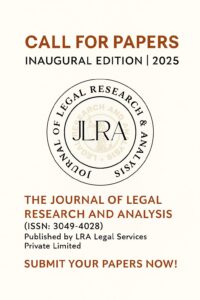
THE LATEST RAIN IS INCONCLUSIVE
Substantial rain may restore water supplies, foster crops, and enhance the purity of air, among other
advantages for the environment and people in many regions of the world. However, there are several
circumstances in which the recent rain might be ineffective or even make matters worse. In this piece,
we’ll look at a few of the potential drawbacks of the recent rain as well as some potential solutions.
Long-lasting droughts cause serious harm to the ecosystem, agriculture, and economy of the afflicted
areas.

A prolonged lack of precipitation or a severe water deficit, known as a drought, can result in the
decline of water tables, the drying up of rivers, and the parching of the soil. Rain may not have been a
comfort in part because of the dryness. Droughts, thus have the potential to cause adverse effect not
only to the soil but also human life.
In these types of circumstances, even if it rains, the earth may not be able to absorb it because it is too
dry to hold water. It’s possible for the rain to bounce off the ground and not permeate the soil or for it
to evaporate completely. This also makes the soil less fertile. Moreover, the water might not be
sufficient to refill depleted groundwater supplies or revive dried-out plants. Long-term dryness can
permanently damage the abilities of soil. Therefore, the recent rain might not be a comfort but rather
only a brief break from the prolonged drought.
The next reason why recent rain may not be a relief is due to flooding. In areas with poor drainage,
heavy rainfall can cause flooding, which can result in property damage, road closures, and other
disruptions. Flooding can also cause landslides and soil erosion, leading to further damage and soil
loss. Flooding can also contaminate water supplies with sediment, sewage, and chemicals, posing
health risks to people and animals. In such cases, recent rain may be seen as more of a problem than a
relief, as it can cause significant damage to infrastructure, homes, and businesses.

A crucial factor in this topic is the intensity of the rain. In mountainous terrain and in places with
unstable soil, heavy rain can cause landslides. These have the potential to be harmful, causing harm to
natural ecosystems and infrastructure. Floods and bank erosion may be brought on by heavy rain,
which is disastrous for nearby structures and residents. Heavy rain can also raise the water level. As
many forest regions are displaced by landslides and floods, these natural disasters can also result in
soil erosion and deforestation. Water contamination and health risks can also be caused by sewage
overflows and other environmental problems brought on by heavy rain. Given this, the recent
downpour may not have been a source of relief but rather danger and destruction.
Another element that may impact whether or not recent rain is welcome is the timing of the rain. If it
rains during a crucial time, as during harvest, it can end up doing more harm than good. Crops may
become unfit for sale or eating if they are damaged by heavy rain during the cultivating season.
As a result, farmers have less time to gather and prepare their crops for sale. Humidity can also delay
harvesting. Additionally, crops may contract diseases due to the humid weather, which may lower
yields and increase damage. This means that for farmers and other agricultural workers, the recent
rain may not have been a respite but rather a cause of suffering and financial loss.

Another essential element to keep in mind when discussing recent rain is topography or geographic
location. Some areas are not situated geographically which favours rainfall. Such areas are the ones that
require water the most. Suppose drought is prevailing in an area, but the recent rain fell in a nearby
location that is not experiencing drought conditions, it may not provide relief for the drought-stricken
area. In these scenarios, the water is carried away from the dried up area, leaving it still drought-
stricken and with inadequate supply of water.
Moreover, the recent rain may have fallen in areas
which do not possess the required structure or facilities to store rainwater. Thus people living in such
areas may do not face difficulties during rainy season but during the dry weather such places may face
drought conditions.







